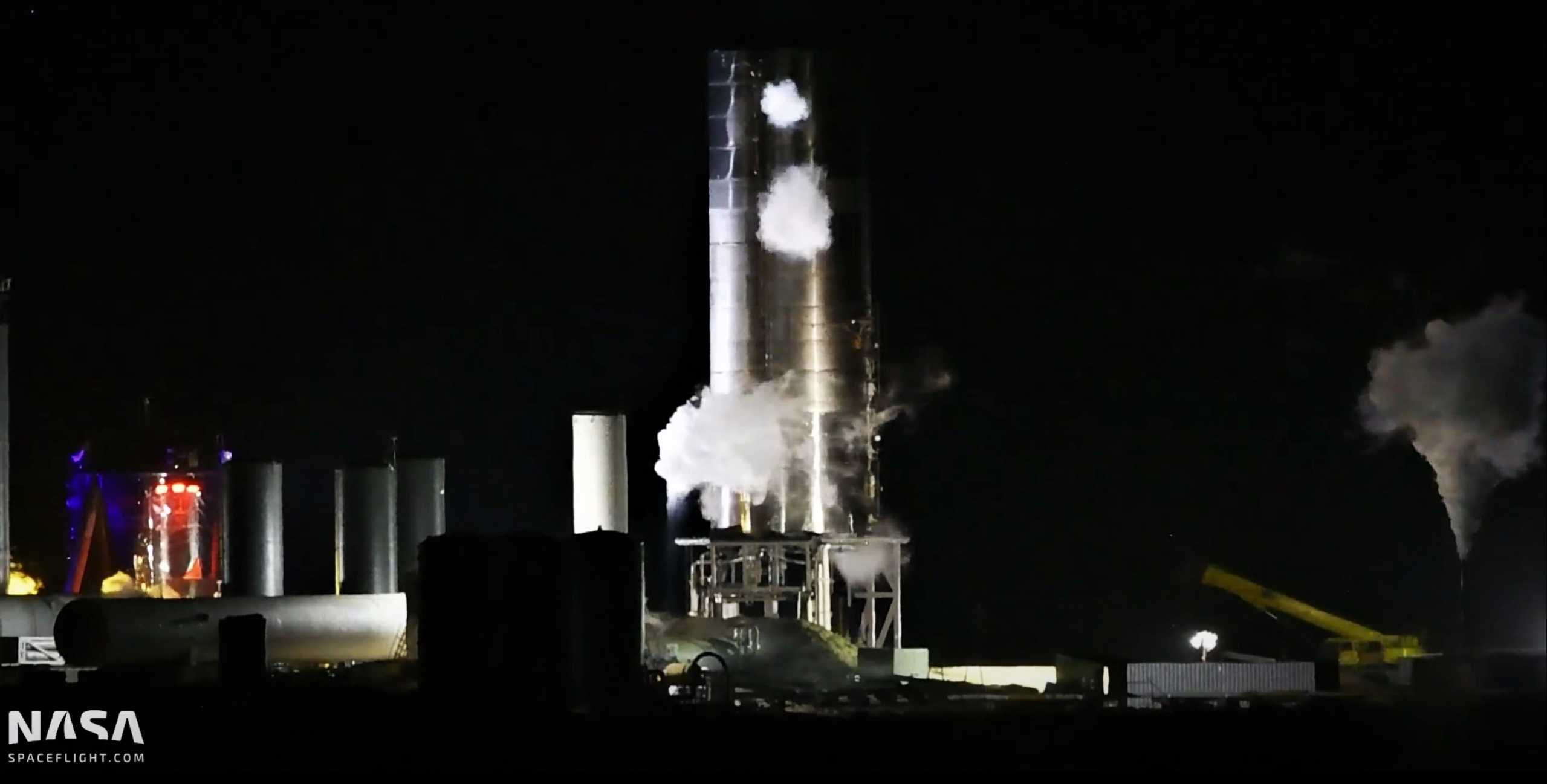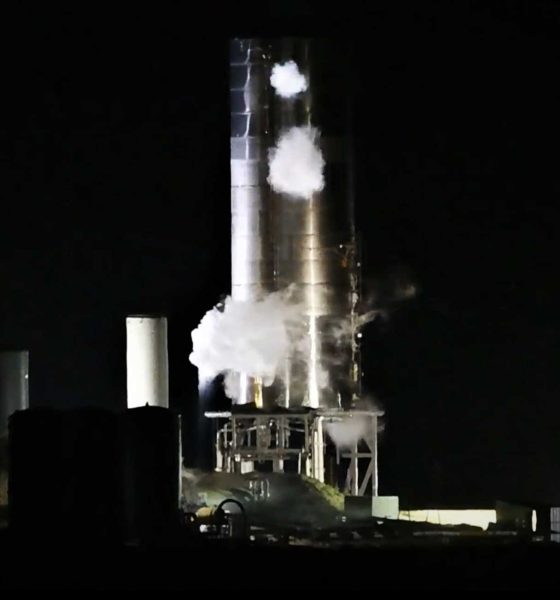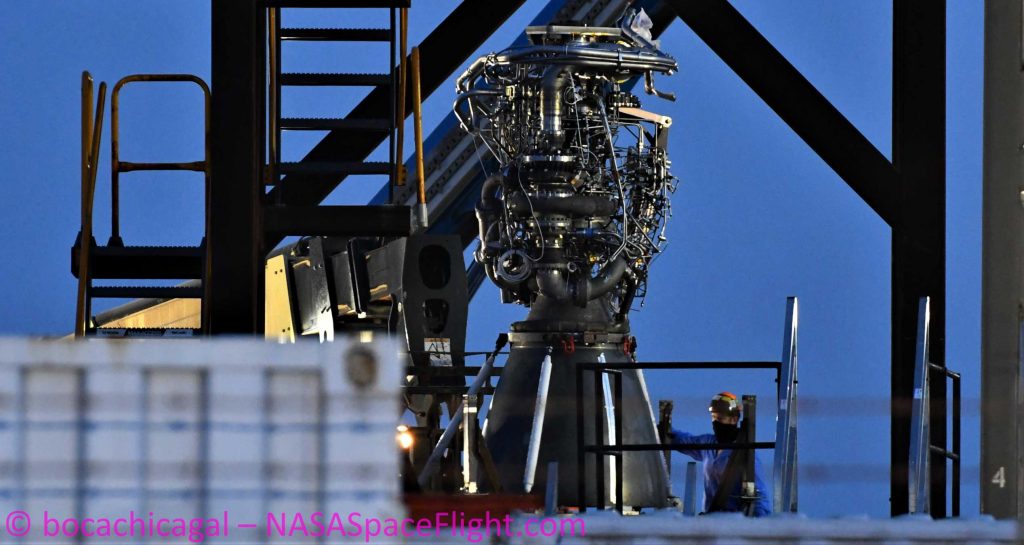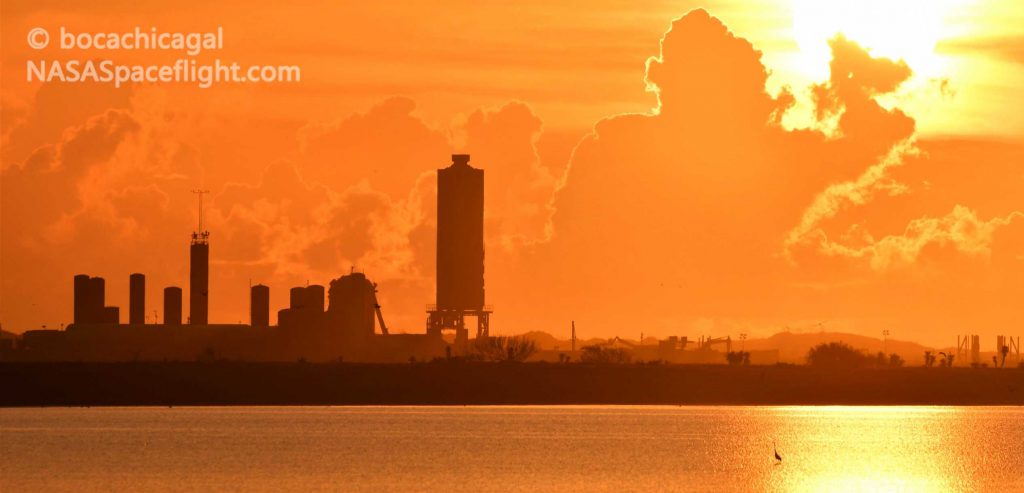

News
SpaceX Starship engine test aborted twice in one day by hurricane damage and bugs
SpaceX has been unable to catch a break in the last few weeks and CEO Elon Musk says that a Starship Raptor engine test was delayed twice in one day by minor hardware bugs and damage caused by Hurricane Hanna.
Although it quickly devolved into a tropical storm and largely missed the southernmost tip of Texas, where SpaceX has built its Starship factory and test facilities, Hanna caused significant damage just a few dozen miles to the north. Above all else, the flooding caused by Hanna has by far been the worst part of the storm. Boca Chica managed to dodge the bulk of that element but was still hit by heavy rain that lasted for a day or two, drenching everything that wasn’t covered and nearly flooding the only access road.
According to Musk, an unspecified “connector” related to Starship SN5 or the pad supporting it was damaged by Hanna’s glancing encounter with SpaceX’s facilities. The connector was ultimately fixed around 7-8 pm CDT per unofficial webcasts showing technicians working around the rocket after they returned to the pad, but SpaceX’s test window technically closed at 8 pm CDT (01:00 UTC).
Nevertheless, SpaceX must have been able to work with local sheriffs to extend that road closure into the night, and – as promised by CEO Elon Musk – testing restarted around 9:30 pm CDT. About an hour and a half later, Starship SN5 appeared to make it all the way through a partial wet dress rehearsal before its Raptor engine test fire was aborted a second time. Based on four static fires completed by Starship SN4 in May 2020, the rocket could have been just a few minutes away from ignition.
According to Musk, Starship SN5’s fuel (methane) “spin valve” – presumably a valve that opens to allow methane gas to spin up Raptor’s fuel turbopump – failed to open when it was supposed to. To ensure Raptor’s health after three inactive weeks spent installed on Starship out in the elements, SpaceX likely planned what is known as a “spin prime” test directly prior to the static fire. If Raptor successfully spun up its turbopumps, SpaceX would proceed directly into static fire operations without having to detank Starship.
During SN5’s second July 27th static fire attempt, Raptor was unable to start that spin prime test, forcing SpaceX to stand down to diagnose and fix the problem. Musk says that SpaceX will attempt to static fire Starship SN5 again tomorrow (July 28th) – assuming the issue can be quickly rectified.


Musk further noted that some “odd…behavior” was observed in the hydraulic pump powering Raptor SN27’s thrust vector control (TVC). Used to steer a rocket engine, Raptor doesn’t technically need functioning TVC to perform a static fire test on the ground, but it’s an issue that will have to be completely fixed before Starship SN5 is allowed to attempt its first flight test. If July 28th finally sees SN5 successfully ignite its Raptor engine, there’s a chance – however slim – that SpaceX will be able to turn the Starship around for its first hop just a few days later.
Check out Teslarati’s Marketplace! We offer Tesla accessories, including for the Tesla Cybertruck and Tesla Model 3.

News
Tesla FSD fleet is nearing 7 billion total miles, including 2.5 billion city miles
As can be seen on Tesla’s official FSD webpage, vehicles equipped with the system have now navigated over 6.99 billion miles.

Tesla’s Full Self-Driving (Supervised) fleet is closing in on almost 7 billion total miles driven, as per data posted by the company on its official FSD webpage.
These figures hint at the massive scale of data fueling Tesla’s rapid FSD improvements, which have been quite notable as of late.
FSD mileage milestones
As can be seen on Tesla’s official FSD webpage, vehicles equipped with the system have now navigated over 6.99 billion miles. Tesla owner and avid FSD tester Whole Mars Catalog also shared a screenshot indicating that from the nearly 7 billion miles traveled by the FSD fleet, more than 2.5 billion miles were driven inside cities.
City miles are particularly valuable for complex urban scenarios like unprotected turns, pedestrian interactions, and traffic lights. This is also the difference-maker for FSD, as only complex solutions, such as Waymo’s self-driving taxis, operate similarly on inner-city streets. And even then, incidents such as the San Francisco blackouts have proven challenging for sensor-rich vehicles like Waymos.
Tesla’s data edge
Tesla has a number of advantages in the autonomous vehicle sector, one of which is the size of its fleet and the number of vehicles training FSD on real-world roads. Tesla’s nearly 7 billion FSD miles then allow the company to roll out updates that make its vehicles behave like they are being driven by experienced drivers, even if they are operating on their own.
So notable are Tesla’s improvements to FSD that NVIDIA Director of Robotics Jim Fan, after experiencing FSD v14, noted that the system is the first AI that passes what he described as a “Physical Turing Test.”
“Despite knowing exactly how robot learning works, I still find it magical watching the steering wheel turn by itself. First it feels surreal, next it becomes routine. Then, like the smartphone, taking it away actively hurts. This is how humanity gets rewired and glued to god-like technologies,” Fan wrote in a post on X.
News
Tesla starts showing how FSD will change lives in Europe
Local officials tested the system on narrow country roads and were impressed by FSD’s smooth, human-like driving, with some calling the service a game-changer for everyday life in areas that are far from urban centers.

Tesla has launched Europe’s first public shuttle service using Full Self-Driving (Supervised) in the rural Eifelkreis Bitburg-Prüm region of Germany, demonstrating how the technology can restore independence and mobility for people who struggle with limited transport options.
Local officials tested the system on narrow country roads and were impressed by FSD’s smooth, human-like driving, with some calling the service a game-changer for everyday life in areas that are far from urban centers.
Officials see real impact on rural residents
Arzfeld Mayor Johannes Kuhl and District Administrator Andreas Kruppert personally tested the Tesla shuttle service. This allowed them to see just how well FSD navigated winding lanes and rural roads confidently. Kruppert said, “Autonomous driving sounds like science fiction to many, but we simply see here that it works totally well in rural regions too.” Kuhl, for his part, also noted that FSD “feels like a very experienced driver.”
The pilot complements the area’s “Citizen Bus” program, which provides on-demand rides for elderly residents who can no longer drive themselves. Tesla Europe shared a video of a demonstration of the service, highlighting how FSD gives people their freedom back, even in places where public transport is not as prevalent.
What the Ministry for Economic Affairs and Transport says
Rhineland-Palatinate’s Minister Daniela Schmitt supported the project, praising the collaboration that made this “first of its kind in Europe” possible. As per the ministry, the rural rollout for the service shows FSD’s potential beyond major cities, and it delivers tangible benefits like grocery runs, doctor visits, and social connections for isolated residents.
“Reliable and flexible mobility is especially vital in rural areas. With the launch of a shuttle service using self-driving vehicles (FSD supervised) by Tesla in the Eifelkreis Bitburg-Prüm, an innovative pilot project is now getting underway that complements local community bus services. It is the first project of its kind in Europe.
“The result is a real gain for rural mobility: greater accessibility, more flexibility and tangible benefits for everyday life. A strong signal for innovation, cooperation and future-oriented mobility beyond urban centers,” the ministry wrote in a LinkedIn post.
News
Tesla China quietly posts Robotaxi-related job listing
Tesla China is currently seeking a Low Voltage Electrical Engineer to work on circuit board design for the company’s autonomous vehicles.

Tesla has posted a new job listing in Shanghai explicitly tied to its Robotaxi program, fueling speculation that the company is preparing to launch its dedicated autonomous ride-hailing service in China.
As noted in the listing, Tesla China is currently seeking a Low Voltage Electrical Engineer to work on circuit board design for the company’s autonomous vehicles.
Robotaxi-specific role
The listing, which was shared on social media platform X by industry watcher @tslaming, suggested that Tesla China is looking to fill the role urgently. The job listing itself specifically mentions that the person hired for the role will be working on the Low Voltage Hardware team, which would design the circuit boards that would serve as the nervous system of the Robotaxi.
Key tasks for the role, as indicated in the job listing, include collaboration with PCB layout, firmware, mechanical, program management, and validation teams, among other responsibilities. The role is based in Shanghai.
China Robotaxi launch
China represents a massive potential market for robotaxis, with its dense urban centers and supportive policies in select cities. Tesla has limited permission to roll out FSD in the country, though despite this, its vehicles have been hailed as among the best in the market when it comes to autonomous features. So far, at least, it appears that China supports Tesla’s FSD and Robotaxi rollout.
This was hinted at in November, when Tesla brought the Cybercab to the 8th China International Import Expo (CIIE) in Shanghai, marking the first time that the autonomous two-seater was brought to the Asia-Pacific region. The vehicle, despite not having a release date in China, received a significant amount of interest among the event’s attendees.








